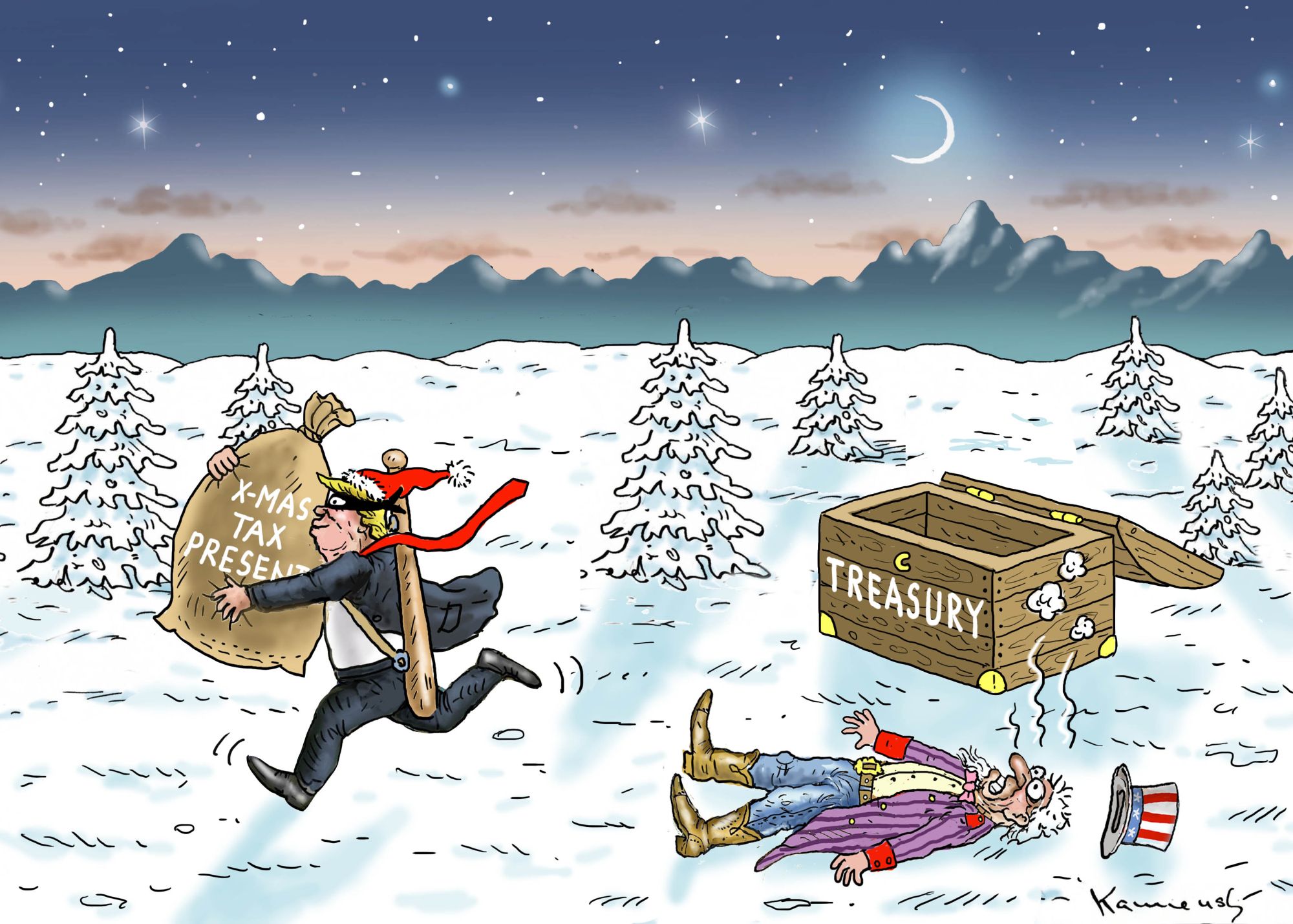The GOP Tax Cuts: A Deep Dive Into The Numbers And Deficit Claims

Table of Contents
The Initial Claims and Promises
The GOP tax cuts, officially known as the Tax Cuts and Jobs Act (TCJA), were enacted with the stated goals of stimulating economic growth, increasing jobs, and simplifying the tax code. Proponents argued these measures would lead to a surge in economic activity, ultimately generating enough revenue to offset the initial tax cuts.
Projected Revenue Increases:
- Initial Projections: The Joint Committee on Taxation (JCT), a nonpartisan congressional agency, projected that the TCJA would reduce federal revenue by $1.5 trillion over ten years. However, proponents argued that this figure didn't account for the stimulative effects of the tax cuts, leading to higher economic growth and increased tax revenue.
- Sources and Assumptions: These optimistic projections relied heavily on assumptions regarding increased investment, higher wages, and a surge in economic activity. The models used were criticized for their reliance on what many viewed as overly optimistic assumptions.
- Counterpoints: Critics argued that these projections were unrealistic and ignored historical trends and evidence showing that large tax cuts for corporations and the wealthy often fail to produce the predicted level of economic growth. Independent economic analyses offered far more pessimistic forecasts.
Economic Growth Projections:
- Predicted Growth: Supporters of the TCJA predicted significant economic growth, exceeding 3% annually, leading to a higher tax base and offsetting revenue losses.
- Mechanisms for Growth: This growth was expected to be driven by increased business investment, job creation fueled by reduced corporate tax rates, and higher consumer spending due to increased after-tax income for individuals.
- Counterpoints: While GDP growth did increase in the immediate aftermath, this was largely considered to be part of a pre-existing trend. Independent analyses suggested that the tax cuts had only a modest impact on GDP growth and did not significantly change the long-term economic trajectory. Many economists pointed out that other factors, like global economic conditions, also influenced GDP growth.
The Actual Economic Impact
Examining the post-TCJA economic landscape reveals a more nuanced picture than the initial projections suggested.
GDP Growth and Employment:
- GDP Growth Data: Following the implementation of the TCJA, GDP growth did see a modest increase, but it wasn't dramatically different from the trends observed in previous years. This increase wasn't solely attributable to the tax cuts, as other global and domestic economic factors played a role.
- Job Creation Statistics: Job creation remained relatively stable after the TCJA was enacted. While there was some increase in employment, it didn't reflect a dramatic surge, as some proponents had predicted.
- Pre-Tax Cut Trends: Comparing post-TCJA figures with pre-existing trends reveals that the tax cuts did not significantly alter the trajectory of either GDP growth or employment figures. Graphs visualizing this comparison would clearly show the limited impact.
Income Inequality:
- Data on Income Distribution: Studies indicate that the TCJA disproportionately benefited high-income earners and corporations, leading to a widening of the income gap. The tax cuts offered significant reductions in corporate tax rates and lowered taxes on capital gains and dividends, leading to a significant increase in the wealth of the wealthy while the effect on lower and middle income families was marginal at best.
- Impact on Different Income Brackets: Lower- and middle-income families experienced smaller tax cuts, and the benefits were often temporary. The long-term consequences further cemented the wealth disparity between the highest and lowest income brackets.
The Deficit's Story: Increased Spending vs. Revenue Shortfalls
The effects of the GOP Tax Cuts on the federal deficit are a complex interplay of increased spending and reduced revenue.
Increased Federal Spending:
- Specific Increases: Federal spending increased across several areas following the TCJA. The tax cuts themselves reduced government revenue, while economic growth did not generate enough compensatory tax income.
- Comparison to Previous Years: The rate of increase in federal spending was notable, exceeding the pace observed in previous years, contributing to the expansion of the national debt.
Revenue Shortfalls:
- Actual Revenue Figures: Actual tax revenue collected fell short of the projections made by the JCT and other proponents of the TCJA. This shortfall reflects the reduced tax rates and the limited growth of the tax base.
- Difference Between Projections and Reality: The gap between projected and actual revenue was substantial, highlighting the shortcomings in the initial revenue forecasts. This discrepancy underscores the limitations of using economic models to predict the impact of such sweeping tax reforms.
- Reasons for Shortfalls: The primary reasons were the significant reductions in tax rates for corporations and high-income individuals, which failed to generate the compensatory revenue growth predicted by supporters.
The National Debt:
- Data on National Debt: The national debt has increased significantly since the enactment of the TCJA. While it's impossible to isolate the tax cuts as the sole cause, they undoubtedly played a major role in exacerbating the already existing debt burden.
- Comparison to Previous Years: The rate of increase in the national debt following the TCJA surpasses the rates seen in many preceding years. This underscores the significant fiscal impact of the tax cuts.
Conclusion
In conclusion, an analysis of the GOP tax cuts reveals a significant discrepancy between initial promises and actual outcomes. The projected revenue increases and economic growth failed to materialize to the extent predicted, leading to substantial revenue shortfalls and a larger federal deficit. The tax cuts disproportionately benefitted high-income earners and corporations, exacerbating income inequality. While some argue that the long-term benefits are yet to be fully realized, the evidence to date suggests that the promises of the GOP Tax Cuts were not met. The increase in the national debt is a clear consequence, with long-term economic effects still unfolding.
We encourage readers to continue researching this critical topic, consulting reputable sources such as the Congressional Budget Office, the Joint Committee on Taxation, and independent economic analyses to further understand the complexities of the GOP Tax Cuts and their ongoing impact. Engage in informed discussions about fiscal policy and tax reform, using credible data to support your arguments. Understanding the impacts of the GOP Tax Cuts, and the broader implications of tax policy, is crucial for responsible civic engagement and informed decision-making.

Featured Posts
-
 Nj Transit Avoids Extended Service Disruptions With Union Deal
May 20, 2025
Nj Transit Avoids Extended Service Disruptions With Union Deal
May 20, 2025 -
 Analysis The Futility Of Michael Schumachers Comeback Attempt
May 20, 2025
Analysis The Futility Of Michael Schumachers Comeback Attempt
May 20, 2025 -
 The Stark Math On The Gop Tax Plan Deficit Impact Analysis
May 20, 2025
The Stark Math On The Gop Tax Plan Deficit Impact Analysis
May 20, 2025 -
 Solo Travel For Beginners Everything You Need To Know
May 20, 2025
Solo Travel For Beginners Everything You Need To Know
May 20, 2025 -
 Chinas Pressure On Philippines Fails Missile System Remains Intact
May 20, 2025
Chinas Pressure On Philippines Fails Missile System Remains Intact
May 20, 2025
